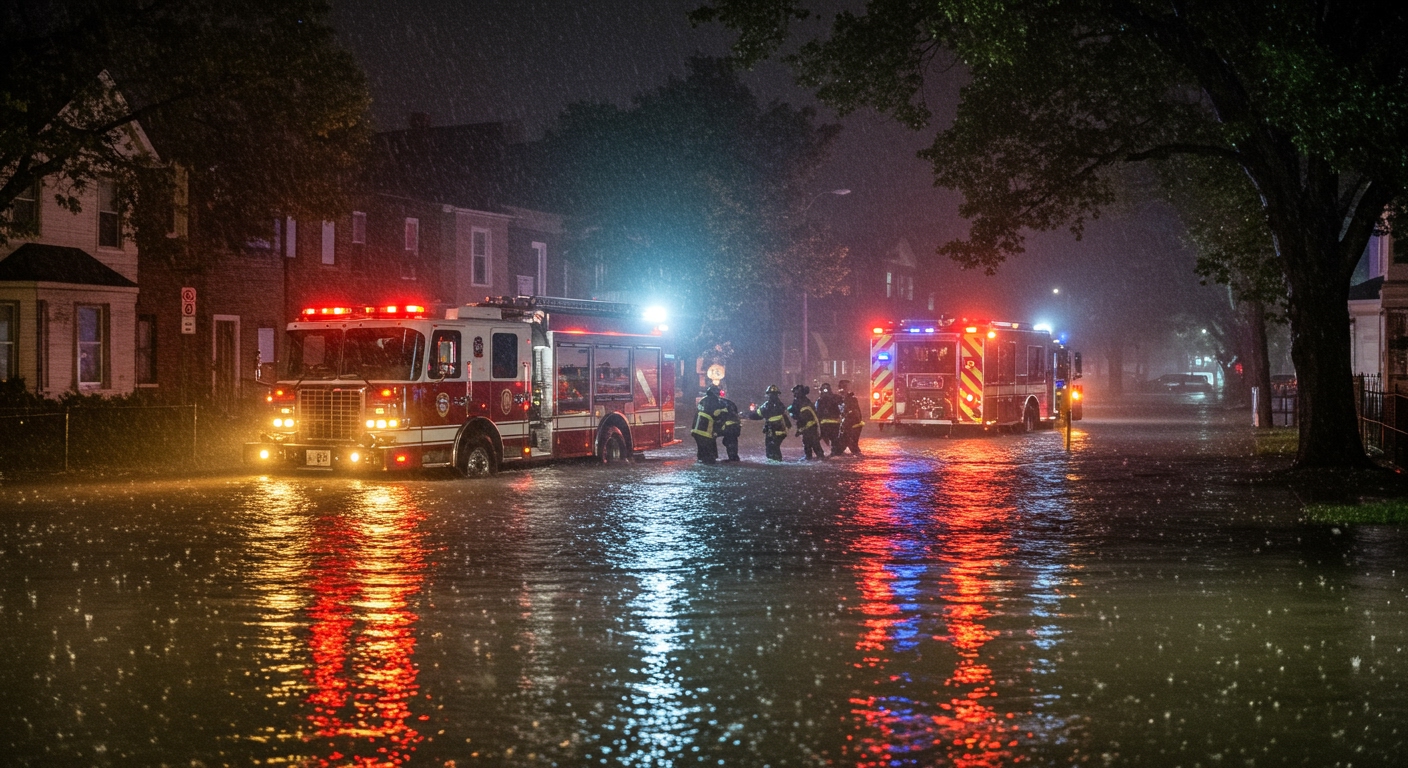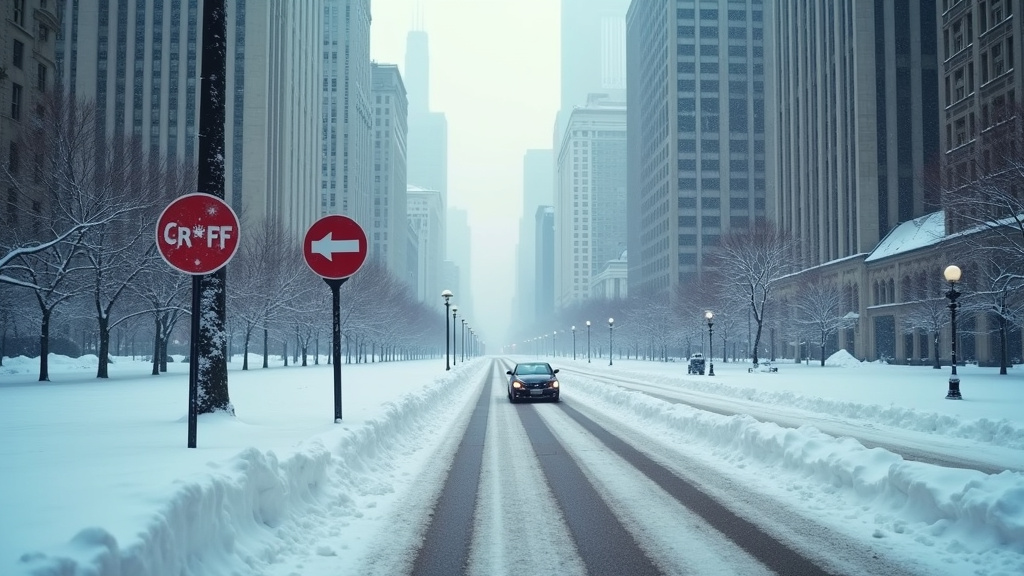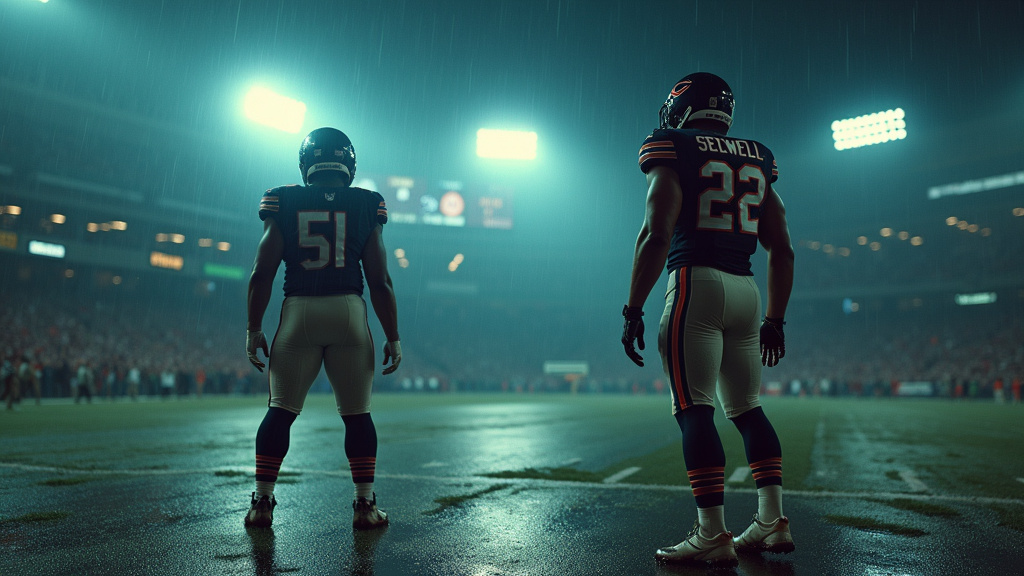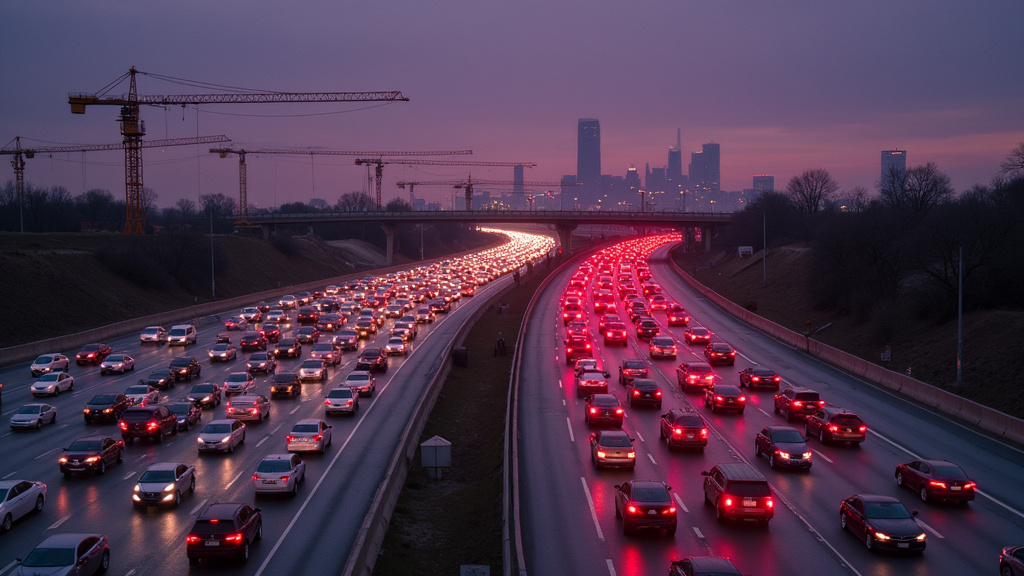Chicago’s West Side was struck by a severe flash flood event on the night of Tuesday, July 8, 2025, following a rapid and intense downpour that delivered rainfall amounts not seen in the city since September 2023. The deluge overwhelmed urban infrastructure, leading to multiple water rescues and widespread basement flooding across affected areas.
The Anatomy of the Storm
The unprecedented rainfall was primarily attributed to a single, powerful thunderstorm cell that developed directly over the city shortly before 9 p.m. Instead of moving through the area, this cell stalled due to an interaction with an outflow boundary – a leading edge of cooler air from another thunderstorm. This stationary nature caused a phenomenon known as “training,” where successive storm cells or rain bands moved over the same area like boxcars on a train track, repeatedly drenching already saturated ground. This persistent rainfall continued until approximately 10:45 p.m.
Record-Breaking Rainfall Totals
The intensity of the rainfall was geographically isolated but extraordinarily high. Near Garfield Park, a staggering 4.63 inches of rain was recorded in less than 90 minutes. The total accumulation from the storm in this vicinity reached 5.45 inches. Areas closer to the city’s center also experienced significant precipitation; near the Loop, 3.81 inches fell in just under two hours. Perhaps most dramatically, radar estimations indicated that total accumulations over the Eisenhower Expressway corridor situated west of downtown climbed as high as 7 inches in some localized pockets. The highly localized nature of this intense weather event was underscored by the minimal rainfall recorded at the city’s major airports: both O’Hare and Midway airports reported only 0.05 inches during the same period.
Emergency Response and Warnings
In response to the rapidly deteriorating conditions and the threat to public safety, authorities issued a Flash Flood Warning for central Chicago at 9:46 p.m. as rainwater quickly inundated streets and low-lying areas. As the situation escalated and the extreme rainfall totals became apparent, the warning was upgraded to a “considerable” threat level at 10:06 p.m. This elevation in severity triggered cell phone emergency alerts, notifying residents in the affected zones of the immediate danger and advising them to take protective measures.
Impact on Residents and Infrastructure
The sudden and intense influx of water had immediate and severe consequences. Emergency services were called upon to perform numerous water rescues, assisting individuals trapped in vehicles or flooded properties. Basements across the West Side and other hard-hit areas were flooded, causing significant property damage and disruption for residents. The city’s stormwater management system, designed to handle typical heavy rains, was quickly overwhelmed by the sheer volume and rate of precipitation delivered by the stalled storm.
Climate Change Connection
Experts point to a disturbing trend linking such intense, localized downpours to the broader context of a warming global climate. Scientific studies indicate that a warmer atmosphere can hold more moisture, potentially fueling more extreme rainfall events when conditions are conducive. An analysis by the non-profit research group Climate Central found a significant 8% increase in the intensity of heavy rainfall events in Chicago since 1970. This trend contributes directly to increased risks of basement flooding and places considerable strain on aging and insufficient stormwater infrastructure, presenting an ongoing challenge for urban resilience planning in cities like Chicago.
Moving Forward
The flash flood on July 8, 2025, serves as a stark reminder of the vulnerability of urban areas to extreme weather phenomena and the increasing frequency of such events in a changing climate. As the city assesses the damage and continues recovery efforts, the incident highlights the critical need for continued investment in infrastructure improvements and adaptation strategies to mitigate the impacts of future heavy rainfall events.











